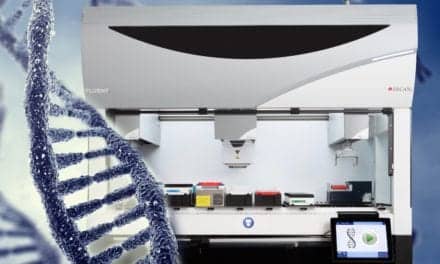Biodesix, Boulder, Colo, has announced newly published data showing that the company’s noninvasive BDX-XL2 test, currently in development, could reduce the number of unnecessary biopsies carried out on patients with benign lung nodules, lowering the overall cost of care as well as patient anxiety.
Each year, approximately 1.6 million lung nodules are detected in the United States, and treating physicians say tools to effectively evaluate the risk of malignancy is an unmet need. To address this need, this fall Biodesix will launch a registry study on the use of BDX-XL2 for ruling out lung nodules. The study will seek to confirm the performance of the clinically validated test in a community setting.
Yearly CT scans of high-risk lung cancer patients has increased the early diagnosis of lung cancer as well as the identification of pulmonary nodules. Yet not all lung nodules are cancerous. The BDX-XL2 test has shown early promise in ruling out cancer through blood samples, including a finding by the pulmonary nodule plasma proteomic classifier (Panoptic) trial indicating that the BDX-XL2 biomarker could lead to a 40% reduction in invasive procedures on benign nodules.1
“This trial represents an important step in development of a molecular profile that will aid in classification of intermediate-risk nodules, and hopefully avoid unnecessary procedures, anxiety, and costs,” say Nawar Al Nasrallah, MD, and Catherine R. Sears, MD, of the Indiana University School of Medicine.2
The BDX-XL2 biomarker is an easily obtained blood-based classifier designed to identify low- to moderate-risk patients with a likely benign lung nodule. The classifier integrates plasma proteins with clinical risk factors associated with lung cancer.
The Panoptic trial was a prospective, multicenter observational trial that evaluated the accuracy of BDX-XL2 for identifying benign lung nodules in patients with a less than 50% pretest probability of cancer. Gerard Silvestri, MD, and Nicole Tanner, MD, of the Medical University of South Carolina, served as principle investigators for the study. In distinguishing between malignant and benign nodules, the BDX-XL2 classifier demonstrated high sensitivity (97%) and high negative predictive value (98%). “This was superior to a PET scan or other pretest prediction models, including the Mayo Clinic and Department of Veterans Affairs estimates,” observe Nasrallah and Sears.
“At Biodesix we see a great need to provide tools for the early diagnosis of lung cancer and that can help guide treatment decisions for physicians and patients throughout the continuum of care,” says David Brunel, CEO of Biodesix. “BDX-XL2 should improve the management of patients who may have lung cancer with a simple blood test. We are working diligently to bring this test to market.”
To confirm the clinical utility of BDX-XL2 in a real-world environment, the company will launch the Oracle observational registry study later this year. The study will evaluate the performance of BDX-XL2 in routine clinical use.
To learn more, visit Biodesix.
References
1. Silverstri GA, Tanner NT, Kearney P, et al. Assessment of plasma proteomics biomarker’s ability to distinguish benign from malignant lung nodules: results of the PANOPTIC (pulmonary nodule plasma proteomic classifier) trial. Chest. 2018;154(3):491–500; doi: 10.1016/j.chest.2018.02.012.
2. Nasrallah NA, Sears CR. Biomarkers in Pulmonary Nodule Diagnosis. Chest. 2018; 154(3):467-468. doi: 10.1016/j.chest.2018.04.032.






